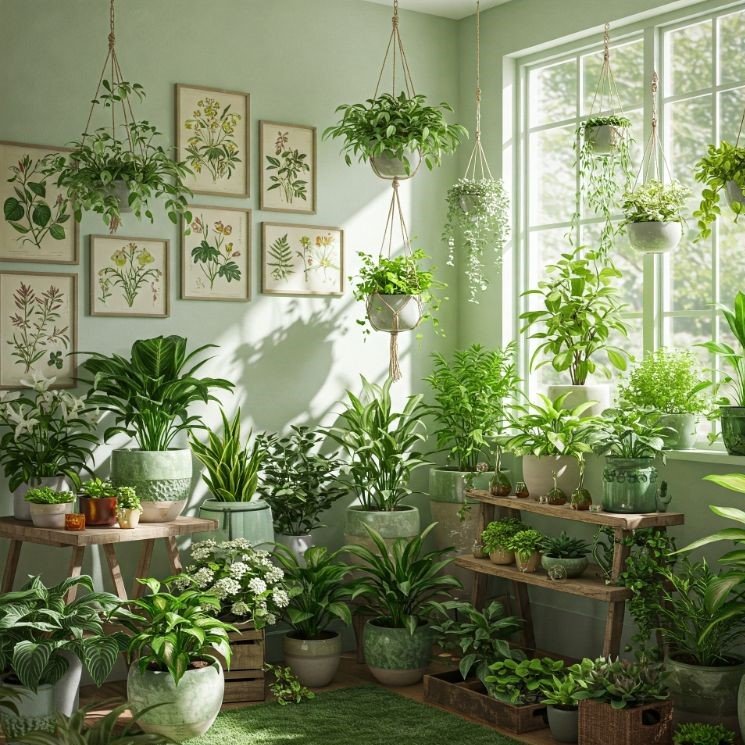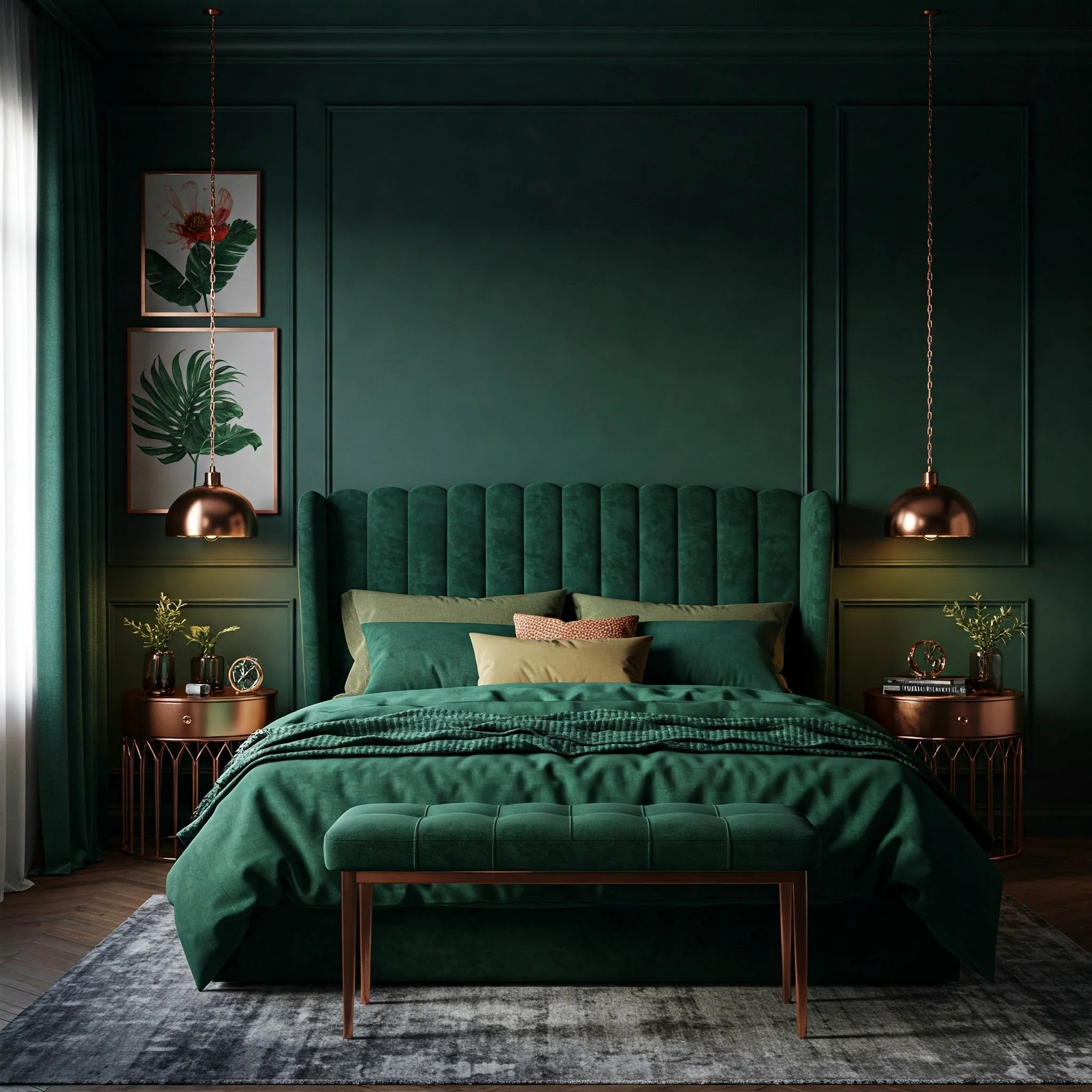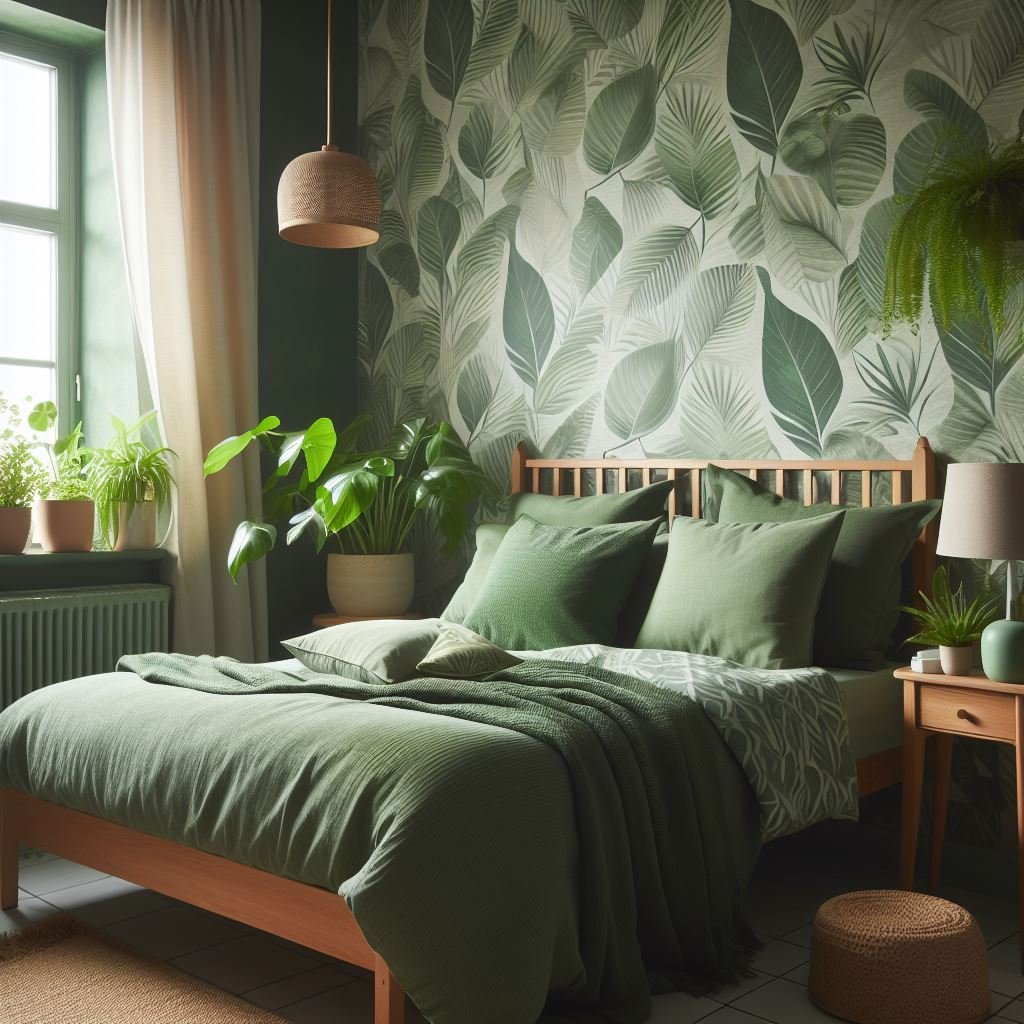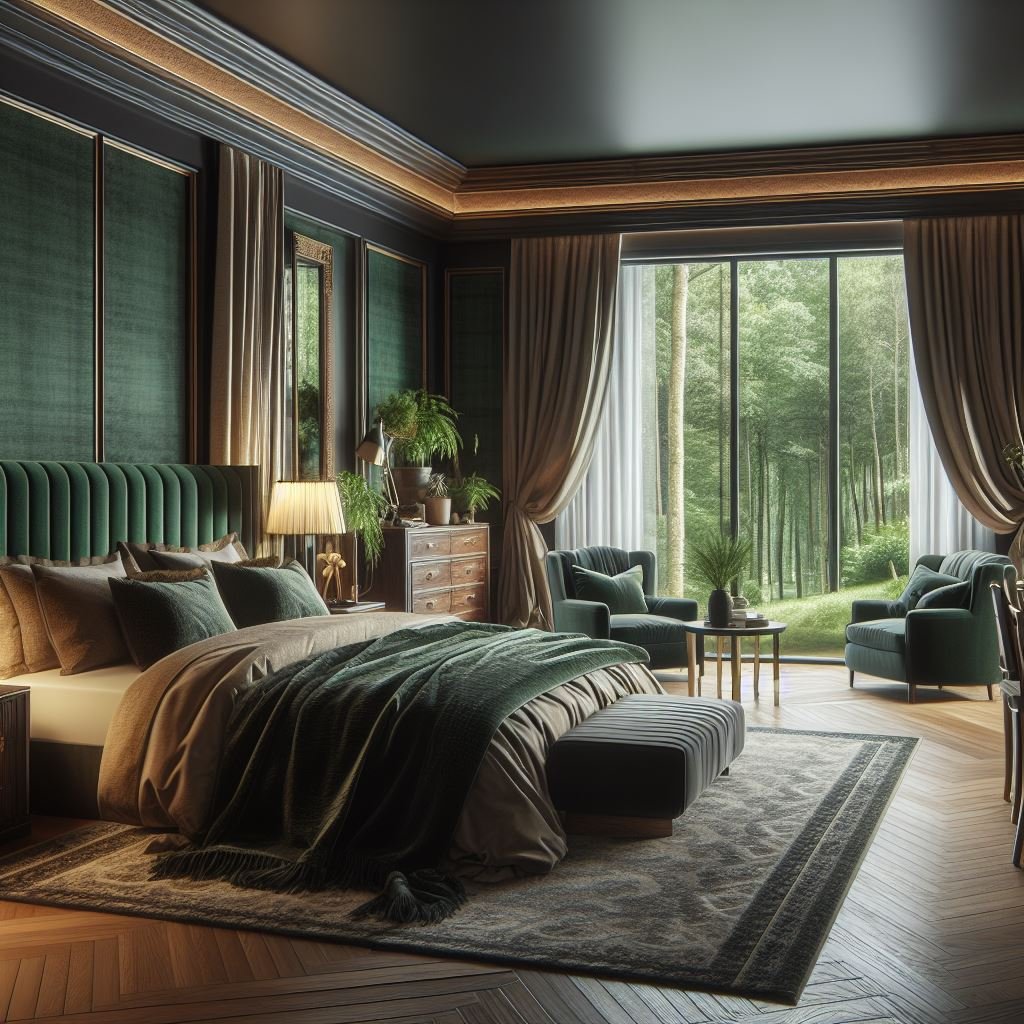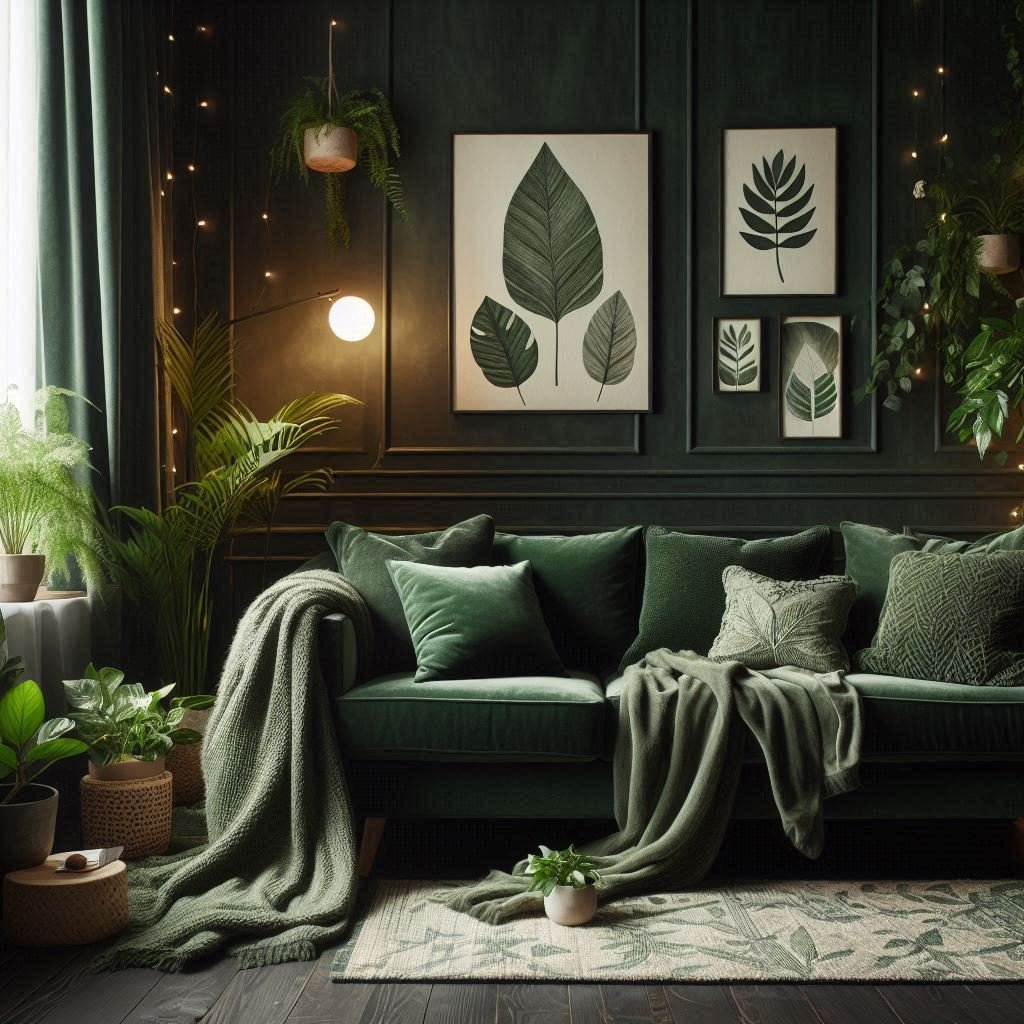15 Botanical Room Ideas to Refresh Your Space Naturally
Discover 15 lush botanical room ideas to create a refreshing, nature-inspired sanctuary in your home—from statement plants to DIY moss walls.
Remember the last time you walked through a lush garden or hiked through a forest? That sense of calm that washed over you, the way your shoulders relaxed, and your breathing deepened? That's exactly what botanical decor brings into your home—a living connection to the natural world that transforms ordinary rooms into rejuvenating sanctuaries. In today's concrete jungles and digital landscapes, our souls crave greenery more than ever. I've spent years experimenting with bringing nature indoors, and I've discovered that botanical elements don't just beautify spaces—they fundamentally change how we feel within them. Whether you're a seasoned plant parent with a jungle-worthy collection or someone who's killed every succulent you've ever owned (we've all been there!), this guide will walk you through 15 transformative botanical room ideas that work with any budget, space limitation, or skill level. Ready to create a space that doesn't just look amazing but actually helps you breathe easier? Let's dig in!
1. Statement Plant Corners That Command Attention
Every botanical room deserves at least one jaw-dropping moment—a statement plant corner that instantly tells visitors, "Nature rules here." Select one architectural plant with presence, like a towering Fiddle Leaf Fig, a sculptural Bird of Paradise, or a sprawling Monstera with dinner-plate-sized leaves. Position it in a corner where it can safely spread without constant pruning. Elevate your green friend in a textured basket or a modern stand that lifts it to eye level. Layer smaller plants around its base like supporting actors in a botanical play. Add strategic lighting—a small upward-pointing light creates dramatic shadows from leaf patterns at night. This focal point serves as your room's living anchor, drawing the eye while setting the tone for your entire botanical design story.
2. Hanging Gardens for Vertical Interest
Why limit plants to horizontal surfaces when your ceiling offers prime botanical real estate? Create a hanging garden that draws the eye upward and transforms unused space into a living canopy. Choose trailing varieties like Pothos, String of Pearls, or Spider Plants that will cascade dramatically as they grow. Mix different lengths, textures, and shades of green for visual interest. Macramé hangers add boho charm, while minimalist metal or glass options create a more contemporary look. Stagger heights to create rhythm and prevent a rigid, uniform appearance. For renters, tension rods between walls or screw-in hooks with clear anchors make removal damage-free. Your vertical garden becomes an ever-changing living sculpture, creating dimension while freeing up valuable floor and surface space.
3. Living Walls for Dramatic Impact
Few botanical features make as powerful a statement as a living wall—a vertical garden that transforms your space into a breathtaking indoor ecosystem. While professional installations can be pricey, DIY options have become increasingly accessible. Start with a pocket planter system designed specifically for vertical gardening, or repurpose a shoe organizer for a budget-friendly alternative. Choose hardy, low-maintenance plants like pothos, ferns, succulents, and philodendrons that thrive in similar conditions. Install a simple drip irrigation system to minimize maintenance, or position your living wall near your shower for a humidity-loving tropical oasis. The living tapestry not only serves as a show-stopping visual centerpiece but also improves air quality and acoustics while connecting you deeply to nature's patterns and processes.
4. Botanical Print Collections That Tell a Story
Not every botanical element needs to be alive to breathe life into your space. Curate a collection of vintage botanical prints that captures the scientific wonder and artistic beauty of the plant world. Hunt for antique illustrations from 18th and 19th-century botanical texts, or choose modern interpretations with bold, graphic treatments. Frame your finds in a mix of vintage and contemporary frames, unified by color or material. Arrange them gallery-style on a feature wall, or scatter throughout your space as recurring botanical motifs. The beauty of this approach? These botanical elements never need watering! For a personal touch, include sketches or photos of plants from places you've traveled, creating a botanical travelogue that sparks joy and conversation.
5. Plant-Inspired Color Palettes for Cohesive Design
Let nature guide your color choices by creating a palette inspired by your favorite plants. Move beyond basic greens by observing the subtle variations in leaf colors—from silvery blue-greens of eucalyptus to the deep emeralds of monstera leaves to the purple-tinged undersides of tradescantia. Complement these botanical hues with earth tones that ground the space—terracottas, sand, and stone colors create a natural foundation. Add unexpected accents inspired by flower colors—perhaps the deep magenta of an orchid or the sunny yellow of a sunflower. Apply your plant-inspired palette to walls, textiles, and accessories for a cohesive look that feels organically curated rather than rigidly planned. This color strategy creates a harmonious backdrop that makes your actual plants pop while maintaining a sophisticated, nature-based aesthetic.
6. Natural Fiber Textures That Complement Greenery
Plants thrive in a backdrop of natural materials that echo their organic origins. Incorporate textural elements made from jute, sisal, bamboo, rattan, and other plant fibers to create a cohesive botanical narrative. Think chunky woven baskets as planters, a sisal area rug that grounds the space, bamboo blinds filtering sunlight, or a statement rattan chair that becomes your reading nook. These elements introduce varying shades of warm neutrals and interesting textures that contrast beautifully with the smooth, cool greens of your plants. The juxtaposition of structured woven items against the wild, organic forms of foliage creates visual tension that brings your space to life. These natural materials age beautifully too, developing patina and character alongside your growing plants.
7. DIY Terrarium Installations as Living Art
Create miniature botanical worlds that function as living sculptures with custom terrarium installations. These self-contained ecosystems thrive with minimal maintenance while offering endless creative possibilities. Choose glass containers with interesting shapes—anything from geometric terrariums to repurposed vintage vessels like old apothecary jars or even light bulbs. Layer small pebbles for drainage, activated charcoal to keep the environment fresh, and special terrarium soil before adding tiny plants like ferns, moss, miniature fittonia, and baby tears. Add personality with miniature figurines, colored sand paths, or tiny crystals. Group multiple terrariums at different heights or create one statement piece. These magical miniature landscapes bring the wonder of nature up close, allowing you to appreciate intricate botanical details often missed in larger plantings.
8. Preserved Moss Walls for Maintenance-Free Green
For plant lovers who travel frequently or struggle with regular maintenance, preserved moss walls deliver dramatic botanical impact without the care requirements. Real moss, preserved through a special process that replaces natural moisture with glycerin, retains its vibrant green appearance and soft texture for years without watering or sunlight. Create a striking accent wall, frame smaller moss "paintings," or install geometric moss panels in interesting arrangements. Combine different moss varieties—reindeer moss, sheet moss, and cushion moss—for textural interest. The preserved nature means no soil, no insects, and no deterioration, while still providing the biophilic benefits of connecting with natural forms. This zero-maintenance option allows you to incorporate lush greenery in spaces that might not support living plants, like windowless bathrooms or low-light hallways.
9. Dried Botanical Arrangements for Lasting Beauty
Embrace the understated elegance of dried botanicals that capture nature's beauty in a moment of perfect preservation. Unlike their fresh counterparts, these arrangements offer lasting impact without constant replacement. Forage for interesting branches, seed pods, grasses, and flowers that dry beautifully—eucalyptus, pampas grass, hydrangea, lunaria, and lavender all maintain their charm when dried. Arrange them in ceramic vessels, vintage bottles, or hang them from walls in simple wreaths or bundled bouquets. Their muted palette of taupes, dusty pinks, and subtle greens brings sophisticated botanical interest without overwhelming the space. These elements introduce seasonal rhythms and textural diversity while requiring absolutely no care. The result is a wabi-sabi aesthetic that celebrates the beauty in nature's aging process rather than perpetual perfection.
10. Herb Gardens That Serve Double Duty
Transform your room with herb gardens that delight multiple senses while serving practical purposes. Position compact herb arrangements in kitchen windows, on dining tables, or near reading nooks where their fragrances can be enjoyed. Choose varieties based on both appearance and usefulness—rosemary's architectural form, mint's vigorous trails, lavender's soothing purple blooms, and basil's glossy abundance. Group herbs in matching terracotta pots for a cohesive Mediterranean feel, or create contrast with modern white ceramics. Beyond their beauty and fragrance, these living seasonings invite interaction—snip fresh herbs for cooking or cocktails, brush leaves to release calming essential oils, or harvest sprigs for tiny impromptu bouquets. This multisensory botanical element connects you to ancient traditions of growing useful plants, adding meaning beyond mere decoration.
11. Nature-Inspired Lighting Solutions
Illuminate your botanical sanctuary with lighting that mimics the dappled, gentle qualities of natural sunlight filtering through leaves. Incorporate paper lanterns that diffuse light like forest canopies, rattan pendants that cast intricate shadow patterns, or string lights nestled among plants for a magical firefly effect. Position uplights behind larger plants to highlight dramatic leaf shapes and create depth through shadow play. Consider color temperature too—opt for bulbs around 3000K that emit a warm white light flattering to plant colors rather than harsh blue-tinged LEDs. For a truly immersive experience, install a smart lighting system that gradually shifts throughout the day, mimicking natural light cycles. These thoughtful lighting choices transform your plant collection after dark, creating evening drama while supporting your plants' natural beauty.
12. Botanical Room Dividers for Flexible Spaces
Reinvent open-concept spaces with plant-based room dividers that define areas while maintaining airflow and connection. Create a living privacy screen using tall, architectural plants like bamboo, dracaena, or snake plants arranged on a long console table. For a more structured approach, repurpose a bookshelf as a plant-focused divider, alternating greenery with books and objects for balance. Hanging planters suspended from ceiling-mounted tension rods create ethereal, floating divisions between spaces. The beauty of botanical dividers lies in their multifunctionality—they separate areas visually while improving air quality, acoustics, and ambiance. Unlike solid walls, these living boundaries breathe and change with the seasons, allowing you to adjust their density by rotating different plants in and out based on your privacy needs.
13. Window Treatments That Frame Outdoor Views
Turn your windows into living frames that celebrate the connection between indoor plants and outdoor landscapes. Choose botanical-print curtains that echo the shapes and patterns of your houseplants, creating visual continuity between inside and outside worlds. Position trailing plants near window corners, allowing them to create natural, living curtains that soften architectural lines. Install glass shelves across windows to create stunning backlit plant displays—especially effective with translucent plants like Chinese money plants or stained-glass begonias whose leaves glow when sunlight passes through them. For privacy without sacrificing light, consider adhesive window films with botanical motifs or install adjustable bamboo blinds that filter sunlight into the gentle, dappled patterns plants naturally thrive under. These thoughtful window treatments enhance natural light while strengthening your room's botanical narrative.
14. Plant-Based Aromatherapy Systems
Engage your sense of smell with botanical aromatherapy systems that transform your space into a multi-sensory haven. Beyond their visual appeal, many plants release natural fragrances that reduce stress and improve mood. Create scent stations throughout your room—a jasmine vine trailing near your bed releases gentle perfume at night, rosemary by your desk sharpens focus, and lavender near seating areas promotes relaxation. For immediate impact, crush a lemon geranium leaf between your fingers when entering the room. Supplement living aromatics with essential oil diffusers using plant-derived scents that complement your botanical theme. Position these elements strategically near air circulation or heat sources that help disperse their beneficial compounds. This invisible but powerful botanical layer works subconsciously, triggering emotional responses and memories while subtly influencing the room's entire experience.
15. Eco-Friendly Furniture That Honors Nature
Complete your botanical sanctuary with furniture pieces that reflect the same environmental values as your plant collection. Seek out sustainable wood pieces certified by the Forest Stewardship Council, ensuring your furniture comes from responsibly managed forests. Incorporate reclaimed materials that tell a story—barn wood shelving for plant displays or a fallen tree slice as a natural side table. Look for innovative bio-materials like mycelium (mushroom) leather upholstery or cork accent furniture that brings literal tree texture indoors. Choose pieces with organic forms that echo natural shapes—curved backs, irregular edges, and asymmetrical designs that complement rather than contrast with your plants' growth patterns. This thoughtfully sourced furniture creates a holistic space where every element—from the smallest succulent to the largest sofa—works together to honor our connection to the natural world.
Conclusion
Transforming your space with botanical elements isn't just about following a design trend—it's about creating a living environment that nurtures your wellbeing while connecting you to the natural world. By implementing these fifteen ideas, you'll create a space that evolves and grows alongside you, bringing seasonal rhythm and natural beauty into your daily life. Remember that botanical styling is forgiving—plants grow, change, and sometimes even die, teaching us valuable lessons about imperfection and renewal. Start with one idea that resonates most strongly with you, and gradually add layers as your confidence and plant collection grow. Your botanical sanctuary awaits!
Read next: How to Create a Refreshing Green Room Aesthetic for Your Space
Frequently Asked Questions
1. How do I keep my botanical room looking lush if I travel frequently?
Focus on low-maintenance plants like ZZ plants and pothos, or consider preserved moss walls and automated watering systems.
2. What plants work best in low-light rooms?
Snake plants, pothos, peace lilies, and ZZ plants thrive in lower light conditions with minimal care.
3. How can I create a botanical vibe without maintaining real plants?
Incorporate botanical prints, natural textures, preserved plants, and nature-inspired colors for a similar aesthetic effect.
4. Will a plant-filled room increase humidity and cause problems?
Group moisture-loving plants in naturally humid spaces like bathrooms, and use dehumidifiers in sensitive areas if needed.
5. How do I protect my botanical room from curious pets?
Research pet-safe plants, raise valuable specimens on shelves, and use bitter apple spray to deter curious cats.
